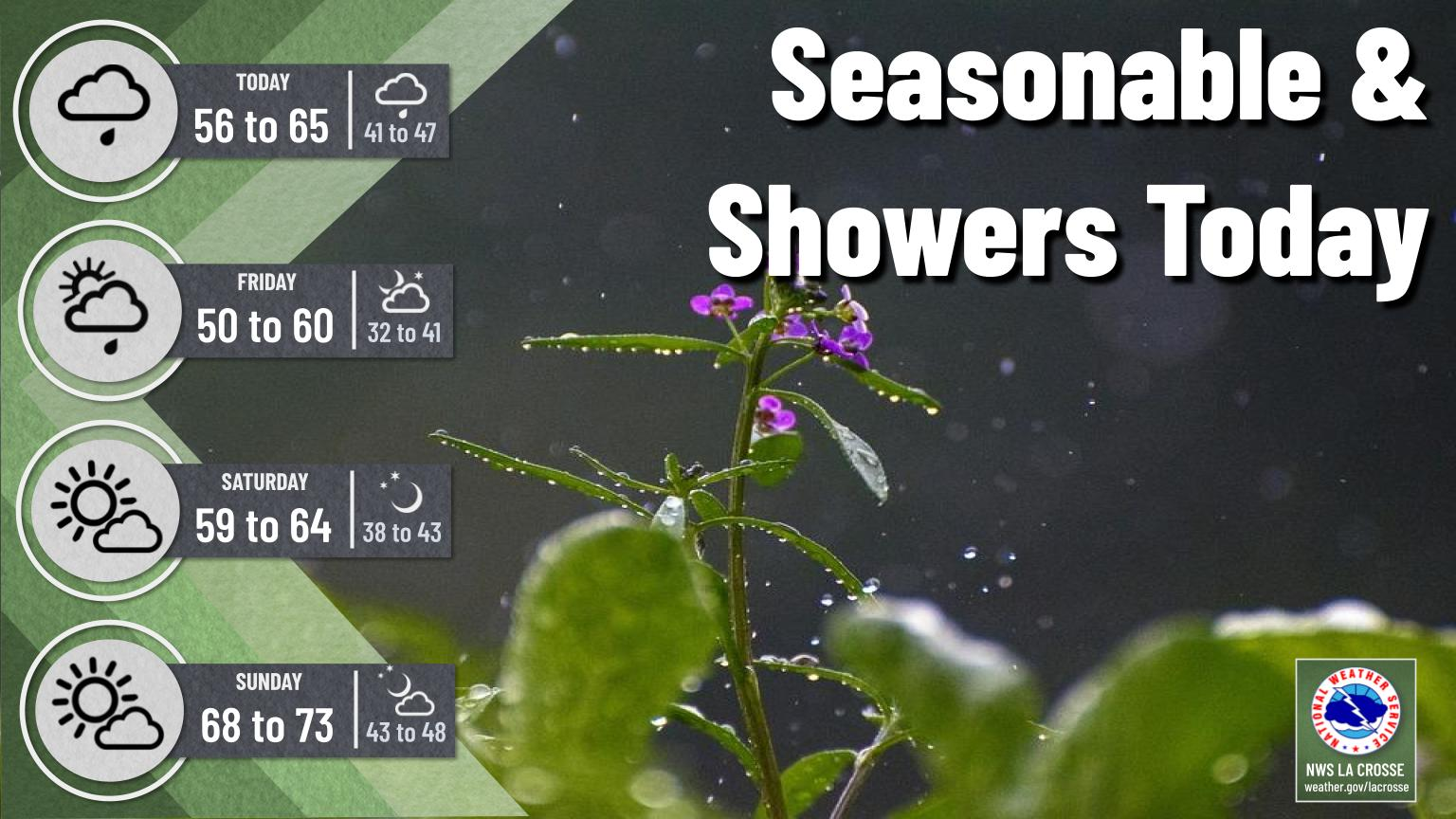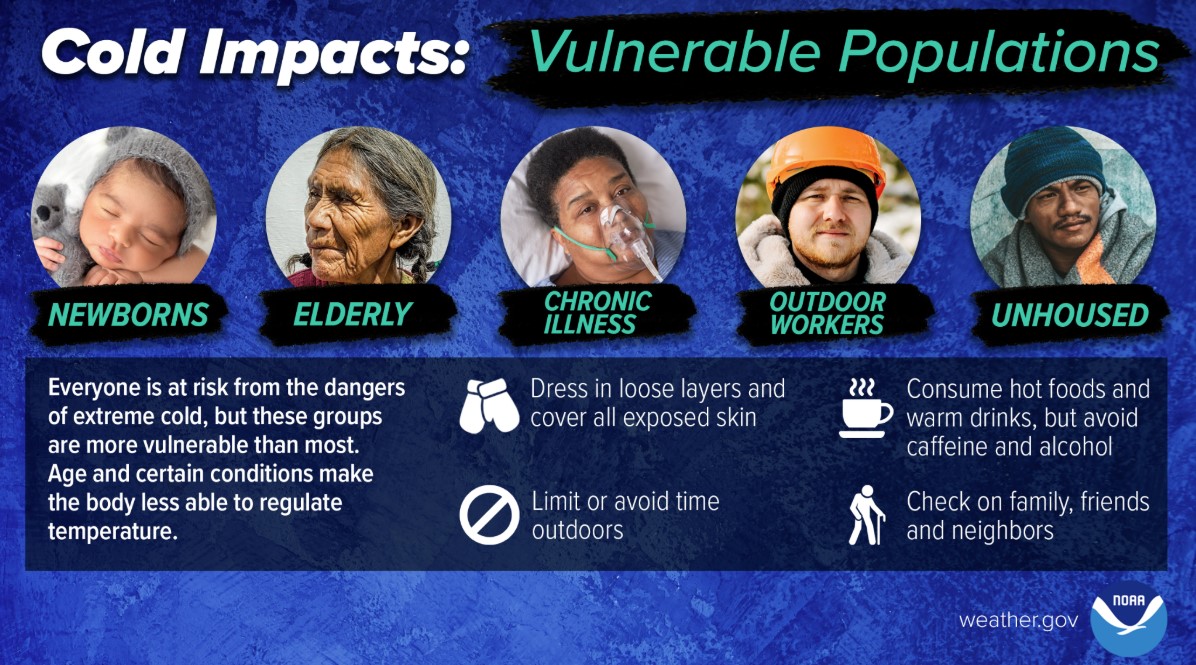La Crosse, WI
Weather Forecast Office
|
A series of Arctic cold fronts will move through the area Friday night into Monday. Wind chills are expected to range from -20 to -35°F nightly from Saturday into Monday. Wind chills this cold can produce frostbite in anywhere from 10 to 30 minutes. What to do?
Saturday Night through Tuesday Morning
Additional Information:
|
• Submit Report • Winter Monitor Hazardous Weather Outlook Latest Weather Statement Storm Reports Current Conditions

Weather Story Cold Safety Graphic |
Our Office
Staff
Want a tour?
Looking for a speaker?
Community Involvement
Station / Location Info
Follow Us On Social Media
Student Opportunities
Weather Safety
SkyWarn
Preparedness
Preparedness (En Espanol)
Weather Radio
StormReady
WRN Ambassadors
Additional Information
Storm Summaries
Cooperative Observers
Educational Resources
Science / Research
Weather Phenomenon
Mayfly Tracking
Latest
Temp/Pcpn Summary
Precipitation Reports
Forecast Discussion
Hazardous Weather Outlook
Hourly Weather
Public Information Statement
Local Storm Report
Lightning Plot Archive
River Stages
Water Temp
Observations
Precipitation Plotter
Soil Temps
US Dept of Commerce
National Oceanic and Atmospheric Administration
National Weather Service
La Crosse, WI
N2788 County Road FA
LaCrosse, WI 54601
608-784-7294
Comments? Questions? Please Contact Us.







